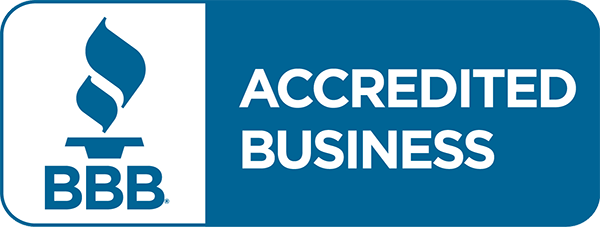Natural Ways to Control Your Blood Sugar

According to a new report from the CDC, more than 100 million US adults are now living with diabetes or prediabetes… and the majority don’t even realize it.
Compared to previous years, the numbers do show that there has been a decrease in those with prediabetes – but the numbers are all still extremely high overall.
Brenda Fitzgerald, MD, director of the CDC, said in a press release: “Although these findings reveal some progress in diabetes management and prevention, there are still too many Americans with diabetes and prediabetes…. Now, more than ever, we must step up our efforts to reduce the burden of this serious disease.”
About Diabetes

Even if you don’t have diabetes, it’s a good idea to know what lifestyle and diet changes you should make to maintain healthy blood sugar levels, and potentially lower your risk of developing the disease.
Diabetes mellitus is actually a group of diseases that affect how your body uses blood sugar (glucose), which is an important source of energy for the cells that make up your muscles and tissues. It’s also a main source of fuel for your brain.
If a person has diabetes (no matter which type), it usually means that they have too much glucose in their blood – which can lead to serious health problems.
Different types of diabetes
There are three main types of diabetes:
- Type 1 diabetes: An autoimmune disorder in which the pancreas can no longer produce insulin. It’s sometimes called insulin-dependent diabetes mellitus. There’s no cure for this condition – if you have it, you must take insulin to survive.
- Type 2 diabetes: About 90% of people who have diabetes have type 2 diabetes, which usually begins as insulin resistance (where the body can’t use insulin efficiently). Over time, the ability of the pancreas to make insulin decreases until it can no longer keep up with the demand. Some people with type 2 diabetes may need to take insulin, while others can manage their blood sugar levels through a healthy diet, exercise and medication.
- Gestational diabetes: This type of diabetes only occurs during pregnancy, due to the insulin-blocking hormones produced during this time. According to the National Institute of Diabetes and Digestive and Kidney Diseases (NIDDK), women with gestational diabetes have a 35%-60% chance of developing type 2 diabetes within 20 years.
There’s also prediabetes, where a person’s blood sugar levels are higher than they should be, but not high enough to qualify as diabetes. Having prediabetes puts you at increased risk of developing type 2 diabetes – though changes in lifestyle, diet and physical activity levels may help delay or prevent the onset of the disease.
What factors contribute to diabetes?

While some studies do show that consuming added sugar may increase the risk of diabetes, the causes of type 2 diabetes are often much more complex.
Anyone can develop type 1 diabetes, which is usually diagnosed in childhood. The exact cause of it is unknown, and there’s currently no known cure or prevention.
For type 2 diabetes, the risk of developing it increases as you age. Other potential risk factors include being overweight, having a family history of diabetes or living a sedentary lifestyle.
Diabetes Myths vs Facts
Diabetes information is readily available these days from healthcare professionals and the Internet, but not all of it is true.
Here are a couple of common myths we’d like to debunk:
Myth #1: “Eating too much sugar can cause type 2 diabetes.”
Fact: “This has been around for years, this idea that eating too much sugar causes diabetes – but the truth is, type 2 diabetes is a multifactorial disease with many different types of causes,” says Lynn Grieger, RDN, CDE, a nutrition coach in Prescott, Arizona.
While some studies do show that consuming added sugar may increase the risk of diabetes, the causes of type 2 diabetes are often much more complex.
Myth #2: “Only overweight people get diabetes.”
Fact: Being overweight is just one of the possible risk factors for diabetes. Around 20% of people with type 2 diabetes are actually of a normal weight, or underweight.

Research suggests that Ceylon Cinnamon helps regulate blood sugar. When taken with a high carbohydrate meal, it appears to aid with digestion, decrease the influx of glucose and improve insulin response!
Natural ways to control your blood sugar
If you have diabetes, then lowering your blood sugar isn’t just a short-term goal: many doctors believe that it consistently helps prevent or delay diabetes complications, including kidney, eye and nerve diseases (such as diabetic peripheral neuropathy).
Even if you don’t have diabetes, it’s a good idea to know what lifestyle and diet changes you should make to maintain healthy blood sugar levels, and potentially lower your risk of developing the disease.
- Cut down on carbs – A diet that’s high in processed carbs adds to your body’s overall sugar load. This is because all carbs get broken down into sugars upon digestion, which leads to increased blood sugar levels and weight gain. Instead of processed carbs, try eating more fresh vegetables, fruits and whole grains (like brown rice, quinoa, buckwheat, amaranth and millets).
- Include proteins/healthy fat with every meal – Proteins and healthy fats (like ghee, butter from grass-fed cows, coconut oil and oily fish) tend to break down slowly in the body, which slows the release of sugars into your bloodstream. This prevents your blood sugar levels from skyrocketing, and instead promotes optimal blood sugar balance.
- Eat a fiber-packed diet – A diet that’s rich in fiber helps slow sugar absorption and carb digestion, which keeps blood sugar levels steady. Women should aim to get at least 25 grams of fiber each day, while men need at least 38 grams (that’s about 14 grams for every 1000 calories).
- Try apple cider vinegar – Apple cider vinegar has many benefits for your health, and has been shown to improve insulin sensitivity and decrease the blood sugar-raising effects of carbohydrates post-meal. The only drawback is its rather potent taste, which some may find off-putting. To make it more palatable, try adding it to salad dressings, or mix two teaspoons into 8 ounces of water.
- Take a Cinnamon extract supplement – Many studies have shown that cinnamon has the ability to help improve blood sugar levels and increase insulin sensitivity – which in turn can lead to fewer diabetes complications. Here’s a tip: If you’re planning to start taking cinnamon supplements, you’ll need to be selective with the type of cinnamon you use. The variety that’s commonly found in the supermarket is Cassia Cinnamon, which can contain high levels of coumarin – a toxin. A better option is Ceylon Cinnamon, which provides more concentrated amounts of this awesome spice without the potentially dangerous levels of coumarin.
Ceylon Cinnamon for Natural Blood Sugar Control
Sources:
https://www.healthline.com/health/diabetes/facts-statistics-infographic#2
https://www.cornerstones4care.com/about-diabetes/diabetes-basics/myths.html
https://www.everydayhealth.com/columns/shilpi-agarwal-your-holistic-health-guide/natural-ways-people-with-prediabetes-can-lower-their-blood-sugar/
https://www.healthline.com/nutrition/15-ways-to-lower-blood-sugar#section1
https://www.healthline.com/nutrition/cinnamon-and-diabetes#section1


